So, you’re thinking about getting a pet hamster, but not sure where to start?
In this article, you’ll learn the basics. How to choose the hamster that is right for you, what you’ll need to buy, and how to care for your hamster so they’ll have a happy and healthy life.
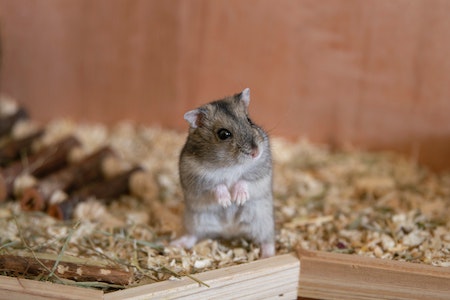
Contents
Hamster Breeds
Not all hamsters are the same, and it’s important to know the difference.
Large Hamster Breeds
The Syrian hamster is one of the most popular breeds to be kept as pets. They are one of the larger breeds, reaching up to 18cm in size. This extra size makes it easier to handle and is more suitable for younger pet parents.
Being bigger than their dwarf breed cousins, they do require extra space and therefore larger cages and exercise wheels.
Dwarf Hamster Breeds
Dwarf hamsters have certainly become popular in recent years. Breeds, including the Roborovski and white Russian hamsters, can be found in most pet stores.
Their small size means they are full of energy and quick on their feet. This makes them fun and interesting pets, but a little more challenging to handle.
Cages/Enclosures
Your pet hamster will need somewhere to live, and choosing the right enclosure is one of the most important parts of hamster care.
There are lots of different cages and enclosures available.
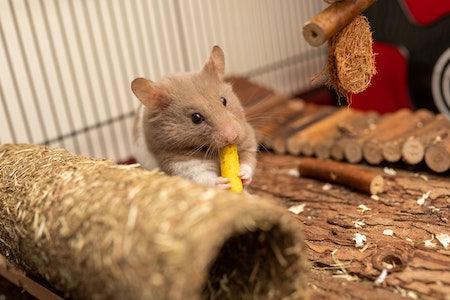
Wire Cages
Wire cages are a popular choice. Lightweight, airy and offer both great views of your pet and an extra bit of climbing for your hamster. These are excellent choices for larger breeds, but be mindful of the size of the holes. If you are keeping dwarf breeds that can squeeze through even the smallest gap, then a solid enclosure would be better.
Regardless of the breed, avoid enclosure with a wire bottom. Solid plastic bottoms are not only easier to clean but are safer for the hamsters’ delicate feet.
Hamster Tanks
Glass or plastic tanks offer a great alternative to a cage. They can be used for any breed, are easy to clean, and relatively escape-proof (If there is a way out, a hamster will find it!)
They are heavier, so bear that in mind if you need to move it around regularly for cleaning. There are some amazing tanks available, with different sections, tunnels, and sleeping quarters to keep your pet entertained.
Cage Sizes
The bigger the better. In the wild, hamsters are known to cover great distances for their size, so the more space you can offer the better. The best approach is to start with the minimum recommendations and then go bigger if possible. Every hamster needs plenty of space to burrow, dig, and hide.
Don’t think that dwarf hamsters need a lot less room. This isn’t true as they have loads of energy and love to scoot around their enclosure.
- Syrian hamster and similar – 76 cm x 31 cm plus 31 cm cage height.
- Dwarf varieties – 61 cm x 31 cm plus 31cm cage height.
An exercise wheel is a MUST for any enclosure, so make sure you have enough room.
Setting Up Your Hamsters’ home
Here is how you do provide them a safe haven and the entertainment they require.
Hamster Bedding
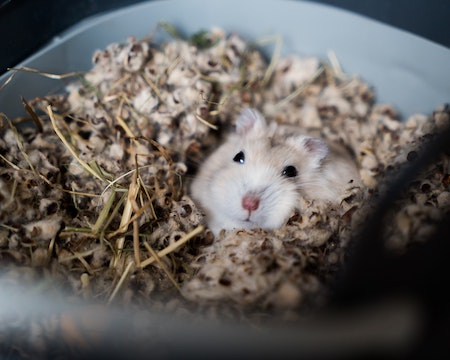
The next most important consideration is hamster bedding. Hamsters love burrowing as much as sleeping, so it needs to be cozy.
Two very important points to consider. It MUST be pet safe, and it HAS to be absorbent. The best types of bedding will be both absorbent and control odors.
Pine and Cedar shaving should be avoided as they are known to be harmful to hamsters and the oils can cause breathing problems. Aspen is a better choice of wood-based bedding.
The best beddings are low dust with zero chemicals. Ensure they are biodegradable. Confetti type of bedding is great for adding color to your hamster’s home.
Houses
Your hamster will need a house or nest box. This is where they’ll sleep, or generally chill out. It’s important for the hamster’s well being that they are somewhere safe, secure, and out of sight so they can get away from the hustle and bustle of a busy home.
Hamsters burrow in the wild, so it’s important to offer this safe space. There are many available, most of which are chew resistant.
Accessories/Toys
Hamsters are curious and energetic little creatures and need plenty of mental and physical stimulation. Accessories that encourage their natural behaviors are a perfect choice – they love borrowing, tunneling, and digging.
Think about toys that are good for hiding and anything that lets your hamster burrow. There are many options for toys on the market.
Hamster teeth grow continuously so they chew and gnaw to keep them short. Toys that are wooden with pet safe paint are a good idea as this lets them chew away and hopefully leave their cage and houses alone.
Exercise
A hamster running through an everlasting journey on its exercise wheel is an iconic image.
In the wild, hamsters will cover great distances, up to several miles, so a way of exercising is a must to keep them happy and healthy. The exercise wheel, in our opinion, is a must.
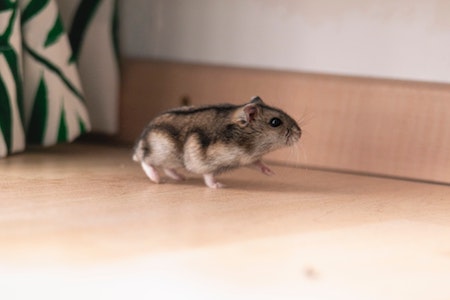
A few things to consider. It must be the right size for your hamster. Too small and they can develop back problems through overarching.
And, and this is sometimes forgotten, get a silent wheel! Hamsters can spend hours on their wheel, particularly at night. At first, the sound of your hamster happily exercising is comforting, but after some time, it wears off and starts disrupting your sleep.
Food
Equipment and exercise aside, providing your pet with the correct food to fulfill their nutritional needs is crucial.
It’s important to know what you should, and shouldn’t feed your hamster.
There are plenty of commercial hamster food mixes available in the stores, and these will make up the bulk of their diet.
Hamsters can be fussy, so go for a good pellet mix that will prevent them from picking out only certain foods, which can happen with a seed mix and result in an unbalanced diet.
These pellet mixes offer a good balance, but it’s also nice to supplement their diet with fresh vegetables, and some fruit, to help with the all-important vitamin c.
Avoid any human ‘junk’ food, and as dwarf hamsters are prone to diabetes, avoid any store brought treats, like seed or yogurt sticks as these tend to contain lots of sugar. Likewise, don’t overfeed with fruits as they are also high in sugar; An occasional small piece of fruit is ok as a treat.
And don’t forget, a ready supply of freshwater.
Good Hamster Foods
- Apples (no seeds)
- Bananas
- Blueberries
- Broccoli
- Carrots
- Cauliflower
- Cucumber
- Dandelion greens
- Grapes
- Kale
- Peas
- Romaine lettuce
- Spinach
- Strawberries
- Sweet potato
- Squash
- Hay
- Mealworms
- Crickets
- Peanuts (unsalted)
- Pumpkin seeds
- Lentils
- Sunflower seeds
- Plain air-popped popcorn (no buttered or salted verities)
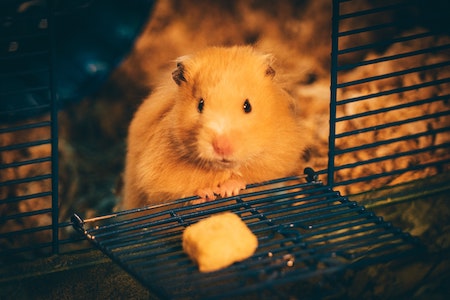
Foods to Avoid
- Avocado, tomatoes, aubergine
- Fruit seeds/pips/pits
- Onion/garlic
- Citrus fruits
- Candy/chocolate
- Salted or flavored nuts
Food should be delivered in a stable bowl that will not topple over as your hamster will climb all over it. Any uneaten food should be removed often, and replaced with fresh.
A good water bottle is the best way to keep your pet hydrated. Pick one that is suitable for your type of encloser, either a clip on one for cages or one with suctions cups for a tank.
Hamster Owners Checklist
Whatever breed of hamster you choose, the basic requirements are the same.\
You will need:
- An escape-proof hamster cage – suitable for your hamster’s size and breed.
- A good quality bedding
- A place for your hamster to sleep and relax.
- A water bottle- one that withstands nibbling teeth.
- The correct sized exercise wheel.
- Food
- Chew proof pet-safe toys
- Tunnels for exploring and playing.
- Suitable Food dish
- Optional – A hamster exercise ball
